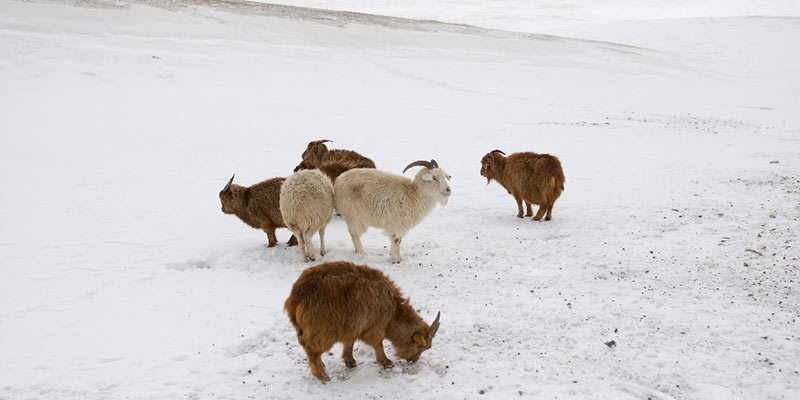- World
- Feb 10
Dzud puts 90% of Mongolia at ‘high risk’
• The ongoing white and iron dzud in Mongolia has reached a critical level, with over 90 per cent of the country facing high levels of risk from the unique weather phenomenon.
• Dzud occurs when the winter conditions, particularly heavy snow cover, prevent livestock from accessing pasture or from receiving adequate hay and fodder.
• About 190,000 herder households are struggling with inadequate feed, skyrocketing prices and heightened vulnerabilities, according to the Office of the UN Resident Coordinator in Mongolia.
• The increasing severity of weather conditions further exacerbates the crisis, underscoring the urgent need for humanitarian assistance and sustainable solutions to support Mongolia’s rural communities and traditional livelihoods.
• Herding and livestock have traditionally been integral to Mongolia’s economy, culture and way of life. Estimates indicate that there are over 64 million livestock this winter season in Mongolia.
• This is the second year in a row that the country has faced these severe conditions. Last winter about 70 per cent of the country was affected.
• Over 2.5 lakh people, including over one lakh children, have been affected as roads have been obstructed by heavy snow, leaving children unable to access vital health, nutrition, education and social services
• Herder families, who are most directly impacted by the dzud, often have to leave their children in the care of relatives or at boarding schools, increasing protection risks and causing psychological stress.
• Immediate needs for February to March include funding for road cleaning programmes, medicines, radios to support remote learning and child protection.
What is dzud?
• Dzud (sometimes spelled zud) is a Mongolian term that describes severe winter conditions.
• It is a natural phenomenon, unique to Mongolia, arising from summer drought followed by heavy snowfalls combined with extreme cold, resulting in insufficient grazing pastures and livestock mortality.
• Dzud is an extreme winter characterised by freezing temperatures, heavy snow and ground so frozen that animals cannot reach pasture.
• These conditions are commonly preceded by a dry summer with equally scant grazing, leaving livestock unable to build up the stores of fat they need for winter.
• The usual peak period for livestock death is February to April. December through February are the coldest months of the year, when livestock lose most of their fat and become malnourished, so these months have the greatest impact.
• Herders wouldn’t be able to prepare hay and fodder in dry summers to survive through the harsh winter.
• According to the UN Economic and Social Commission for Asia and the Pacific (ESCAP), the frequency and intensity of dzuds have been increasing since 2015 due to worsening impacts of climate change and poor environmental governance.
• This winter, the dual “white” and “iron” dzud is marked by a very deep snow cover preventing animals from accessing grass (white dzud) combined with a short thaw and subsequent hard freeze that locks up pastures in ice (iron dzud).
Types of dzud
There is a conventional classification of dzud types based on direct factors contributing to conditions that prevent animals from grazing for consecutive days, finally resulting in their starvation.
i) White dzud is defined as conditions during which grasses that grow during the summer and decay during the subsequent cold season are covered by deep snow, preventing grazing. The snow depth during these conditions substantially exceeds plant height. This is the most common and disastrous dzud type.
ii) Iron (or glass) dzud happens when grasses are covered with impenetrable ice that is produced through melted and refrozen snow (most likely occurring during spring and autumn).
iii) Black dzud refers to freezing temperatures and lack of snow in winter (essential for livestock and human water) and limited forage/pasture due to preceding summer drought.
iv) Storm and cold dzuds both tend to result from strong winds and blizzard, and cold surge conditions. These weather patterns reduce the intake of pasture by livestock, which is determined by the availability of phytomass and grazing time.
v) Hoof dzud is primarily associated with lack of pasture, often caused by overgrazing. This may occur when an excessive number of animals are concentrated in relatively good but limited pasturelands.
Manorama Yearbook app is now available on Google Play Store and iOS App Store


